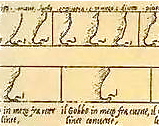Aspirin Before Surgery
October 17th, 2013
 Preparation for surgery is essential to make the post-operative course for patients easier and safer. Both pain and risk of complications can be reduced if you follow doctors orders before and after your surgery. Here is one of my top recommendations prior to surgery on our Do and Don’t list for our patients (other surgeons may have different recommendations). It is important for patients to follow whatever instructions their chosen surgeon provides.
Preparation for surgery is essential to make the post-operative course for patients easier and safer. Both pain and risk of complications can be reduced if you follow doctors orders before and after your surgery. Here is one of my top recommendations prior to surgery on our Do and Don’t list for our patients (other surgeons may have different recommendations). It is important for patients to follow whatever instructions their chosen surgeon provides.
Discontinue taking all aspirin and NSIDs, such as Ibuprofen, before surgery. Both of these drugs affect platelet function in the blood. The result is a reduced ability to clot the blood when tissue is divided (cut) in surgery. This can lead to unwanted bleeding and bruising after surgery. These effects last for two weeks. Therefore, I recommend that patients stop taking these medications two weeks before surgery.
Most surgeons give their patients detailed written instructions before surgery. Read All Your Materials. We provide our patients with comprehensive before surgery instructions, after surgery instructions, a list of medications to avoid, and the surgical consent. Go over the documents a couple of times and make sure you understand everything. If you have questions, call or make an appointment and get all your questions answered. A well-informed patient is a goal that we strive for, because even cosmetic surgery is still surgery.
Surgery is by and large safe. However, complications are always a risk with any surgical procedure. You can help in reducing your post-operative risks by following a few simple recommendations before surgery. Detailed Before and After Nipntuck Instructions are included on our site. Please use our search function for our instructions and a Q&A for a specific procedure.
Pick your Nose! Diary of a Nose Job
October 15th, 2013
 How much can I change my nose?
How much can I change my nose?
Plastic surgeons most often want to give you the results that you want. I really think this stems from a profound sense of responsibility regarding patients that are placed in a physician’s care. This responsibility is firmly instilled in young residents during plastic surgery training. Within the specialty of elective cosmetic surgery, choice plays a bigger role than surgeries of a more critical emergency nature. In an elective cosmetic setting, both the surgeon and their patient have the luxury of time to consider their options. Rhinoplasty, frequently referred to as “Nose Job” is one such surgery where many options might be considered.
Patients frequently bring in pictures saying, “I want my nose to look like this.” While choices are many, several factors dictate whether this nipntuck request represents realistic expectations. It is important to understand the possibilities and limitations presented by the anatomy of a particular nose, the aesthetics of the individual facial structure and desires of the patient. These physical findings represent many of the factors that are involved in designing a nose surgery. No two noses are alike.
Modern rhinoplasty philosophy and techniques do give us a vast number of combinations with regards to a specific nose surgery. We are able to either increase or decrease the size of any part of your nose. For example, a surgeon might increase the height of the bridge of the nose, while decreasing the width of the tip. Custom combinations comprise a particular surgical plan.
Unfortunately, these techniques are not as precise as sculpting a piece of metal or clay, but this surgery has high patient satisfaction. Before and After photographs will usually give you a sense of the surgeon’s personal skill. My patient, Lisa, graciously contributed her own rhinoplasty recovery diary to share on our blog. Besides writing a day-to-day account of her healing process, we also agreed to have her rhinoplasty surgery filmed. Click here to read Lisa’s blog and see her After Photo. Watch some film clips of actual surgery.
Several of my patients have shared their experience with having a rhinoplasty or nose job. Use our site search feature to read more of their stories.
Illustration by Italian Master, Leonardo Davinci
